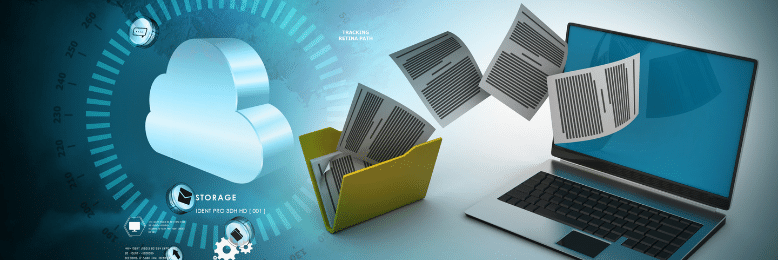Backup vs Replication: What The Difference Is, and Why You Need Both
February 25th, 2022 | 2 min. read

Data loss has the potential to deal a death blow to your business. Whether that loss is caused by human error, hardware failure, theft, infection, or even a natural disaster, if you don’t have measures in place to get your data back and restore operations quickly, even a minor crisis can be impossible to recover.
Business Continuity planning can help your business prepare for and bounce back from any disaster, so long as it includes redundancies. Backing up essential data and applications should be second nature by now, both at the office and at home. But with so many data backup and storage options to choose from, selecting the right option to handle the right scenario is just as important as having those measures in place, to begin with.
Misconceptions about how these options work and the purpose they serve can make coming to the right decision challenging. One of the biggest points of confusion lies in the difference between data backups, and data replication. On the surface, they seem almost identical. But relying on one to do the job of the other could mean losing the data you’re trying to protect.
What are Data Backup and Data Replication

Let’s quickly compare the two.
Data Backup
- Copies necessary files and applications to a secondary location such as a hosted or offsite server
- Backups are done periodically throughout the day and preserve a “snapshot” of your data from a certain point in time
- These snapshots can be used to restore data that has been lost or corrupted on your primary systems
- Because they exist separate from both your network and office, they are protected from anything and everything that can harm your business
Data Replication
- Mirrors the data stored on a server to another server – or servers – instantaneously or nearly instantaneously depending on your infrastructure
- Replicated data provides an exact copy of whatever is on your network at a given moment, and is ideal for restoring access quickly to mission-critical data and applications after a disaster
- The primary focus is on ensuring that you have continuous access to the applications and processes your business needs to function
Why Aren’t These Options Interchangeable?
Data backups, even backups that are done using a cloud-based or hosted server, can’t guarantee the same level of continuity as replication. You’ll still face downtime if you need to use your backups. And because replication creates instant copies of your data, if those files are corrupted or erased, the damage will have spread to each replicated server by the time you realize something is wrong. This means that you’ll have nothing to restore once the onsite issue has been fixed.
Both data backups and data replication have their strengths and weaknesses. But when combined, they provide the ultimate Business Continuity plan.
Start Building Your Business Continuity Plan
Building one of these plans for your business starts with having your current infrastructure evaluated by experts who understand how both of these options work, and how best to make them work for you.
The network security experts at Intelligent Technical Solutions have firsthand experience implementing and maintaining both backup data solutions and data replication solutions, as individual measures or as a hybrid solution. We provide ongoing support for your Business Continuity plan, and our technicians will be there to get you back on your feet should that plan need to be put into action.
ITS San Francisco is part of the ITS' writer's circle, writing about the latest news about Cybersecurity, Managed IT, Cloud Services, and Technology.
Topics:
